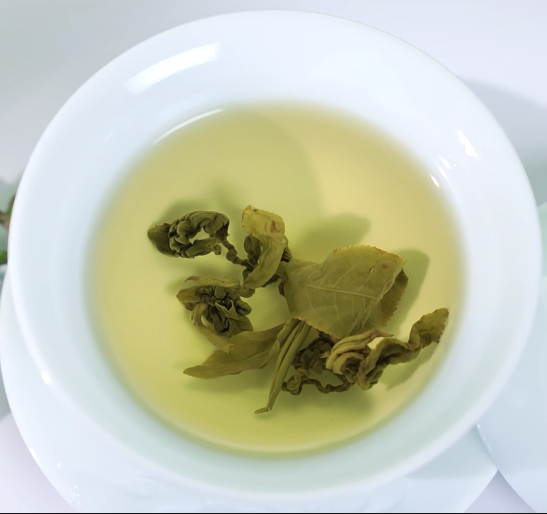Tea grading plays a crucial role in distinguishing the quality, flavor, and overall experience a tea provides. The grade of tea is determined based on the size, shape, and integrity of the tea leaves, which directly impacts its appearance, brewing quality, and even taste. This article explores how different tea grades influence these factors, helping tea enthusiasts and casual drinkers alike to understand what makes each grade unique.
1. Understanding Tea Grading Systems
Tea grading is a classification system that evaluates the quality of tea leaves, particularly in black and green teas. This grading system includes terms like OP (Orange Pekoe), BOP (Broken Orange Pekoe), and F (Fannings), each referring to specific characteristics of the tea leaves. The grade is assigned based on the size, condition (whole or broken), and type of leaves or buds. Higher grades typically indicate whole leaves or buds, while lower grades often consist of smaller particles or broken leaves.
2. The Impact of Tea Grades on Appearance
- Whole Leaf Grades (e.g., OP, SFTGFOP): Higher-grade teas like Orange Pekoe (OP) or Super Fine Tippy Golden Flowery Orange Pekoe (SFTGFOP) consist of larger, whole leaves with a visually pleasing shape. These leaves maintain their structure, providing a vibrant, intact appearance that appeals to connoisseurs and those who enjoy the traditional aesthetics of tea. Whole leaf teas are often prized for their color, sheen, and uniformity, which contribute to their premium presentation.
- Broken Leaf Grades (e.g., BOP, BP): Broken Orange Pekoe (BOP) and Broken Pekoe (BP) grades have slightly smaller, fragmented leaves. Though they lack the full structure of whole leaf teas, broken leaf teas still possess a rich appearance. These grades are known for their strength in flavor and are commonly used for tea blends, offering a balance between appearance and practical use.
- Fannings and Dust Grades: Lower grades like Fannings and Dust are tiny leaf particles often used in tea bags. While they lack the visual appeal of whole or broken leaves, they brew quickly and produce a strong, bold flavor. Their appearance may be less vibrant, but they provide convenience and are ideal for a quick, robust cup of tea.
3. How Tea Grades Affect Brewing Quality

The grade of tea greatly influences how it brews, affecting the color, aroma, and intensity of the flavor:
- Whole Leaf Teas: Whole leaf teas generally have a slower release of flavor and aroma, resulting in a delicate, nuanced cup. They brew with more subtlety, allowing drinkers to appreciate complex flavors over multiple infusions. Whole leaves expand when brewed, releasing essential oils gradually, which leads to a balanced, refined taste.
- Broken Leaf Teas: Broken leaf grades release flavors more quickly due to their increased surface area. They often produce a stronger, fuller-bodied brew that works well for those who prefer a bolder flavor. Broken leaf teas are versatile and are typically used in blends, offering a quicker brew while maintaining quality.
- Fannings and Dust: Fannings and Dust, commonly found in tea bags, provide a quick, intense brew. They are ideal for those seeking a strong cup in a short amount of time, as they release flavors rapidly due to their fine particle size. While they lack the complexity of whole leaves, they offer convenience and a robust taste, making them a popular choice in commercial tea production.
4. Flavor and Strength: What Each Grade Brings to the Table

- Higher Grades (Whole Leaves): These teas offer complex flavors with light, delicate notes that evolve over multiple infusions. They are often aromatic and less astringent, appealing to tea drinkers who prefer a smooth, nuanced experience.
- Medium Grades (Broken Leaves): These teas produce a bold, hearty flavor in the first infusion, making them suitable for those who enjoy a strong brew. They are balanced, capturing a middle ground between delicacy and strength.
- Lower Grades (Fannings and Dust): Fannings and Dust are favored for their intense strength and briskness. They are typically more astringent but provide a quick, concentrated tea experience.
5. Choosing the Right Tea Grade for Your Preference
Understanding tea grading helps tea lovers select the best type based on their preferences:
- For Delicate, Slow-Brewed Cups: Whole leaf teas, like OP and SFTGFOP, are ideal, especially for those who appreciate a gentle, aromatic experience over several infusions.
- For a Balanced and Quick Brew: Broken leaf teas, like BOP, offer a strong, satisfying flavor without the intensity of lower grades.
- For a Quick, Bold Brew: If you’re looking for a strong, fast cup of tea, Fannings or Dust will provide an intense flavor quickly, making it convenient for busy mornings or when time is limited.
Conclusion
Tea grading is more than just a classification—it’s a guide to understanding how the appearance, brewing quality, and flavor of tea differ across types. Whole leaves provide a beautiful, aromatic experience with layered flavors, while broken leaves and finer grades cater to those who enjoy a robust and practical cup. By understanding how tea grading affects the brewing experience, tea lovers can find the perfect match for their taste and lifestyle.
